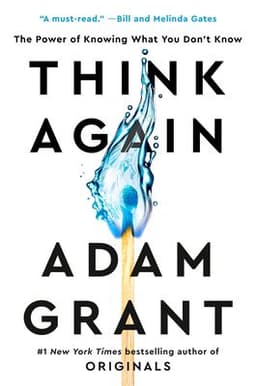
Think Again Book Summary
The Power of Knowing What You Don't Know
Book by Adam Grant
Summary
Think Again is a compelling exploration of the power of knowing what you don't know, and how embracing the joy of being wrong and actively questioning your opinions can help you make better decisions
Sign in to rate
Average Rating: 5
1. Individual Rethinking
The Power Of Knowing What You Don't Know
Chapter 1 introduces the concept of "rethinking" - the ability to question your existing beliefs and opinions, and update them based on new information. The author argues that in a rapidly changing world, the ability to rethink and unlearn is more important than raw intelligence or knowledge. The chapter gives examples of people and organizations that failed to rethink their assumptions, often with disastrous consequences. These include the demise of BlackBerry, the Challenger and Columbia space shuttle disasters, and the 2008 financial crisis in Iceland.
Section: 1, Chapter: 1
What The Wildfire Tragedy Teaches Us About Rethinking
The chapter opens with the tragic story of the 1949 Mann Gulch wildfire in Montana that killed 13 firefighters. The firefighters were unable to outrun the fire and drop their heavy equipment in time, which sealed their fate. Psychologist Karl Weick later analyzed that the real problem was the firefighters' inability to drop their tools - both physical tools and mental models. They were so attached to their existing way of doing things that they couldn't adapt in time. This highlights how important it is to "drop your tools" - i.e. let go of existing beliefs and habits - in order to rethink and survive in a fast-changing environment.
Section: 1, Chapter: 1
The 4 Modes of Thinking
The chapter outlines 4 modes that our thinking can fall into:
- Preacher mode - when we preach our beliefs and try to defend them from any counterarguments. We focus on convincing others to agree with us.
- Prosecutor mode - we try to prove others wrong and win the argument at all costs. We focus on attacking the other side's weaknesses.
- Politician mode - we try to tell people what they want to hear to gain their approval and support. We focus on campaigning for people's support.
- Scientist mode - we try to seek the truth by questioning assumptions, running experiments, and updating beliefs based on evidence. We focus on discovering reality.
Section: 1, Chapter: 1
Confidence Vs Competence
It's easy to conflate confidence and competence, assuming that those who speak with conviction must know what they're talking about. But there is often a divergence between the two. Overconfidence is especially common among those with the least ability. The trouble is when we mistake confidence for competence, we stop questioning ourselves and fail to rethink faulty assumptions. To counter this, whenever you feel very confident about something, remind yourself "I might be wrong" and look for ways to prove yourself wrong. Don't assume that just because you believe something strongly, it must be true.
Section: 1, Chapter: 1
Beware The Dunning-Kruger Effect
Chapter 2 explores the confidence-competence gap, focusing on the Dunning-Kruger effect. This is a cognitive bias where people with low ability in a domain tend to vastly overestimate their skills, while those with high ability tend to be more accurate or even underestimate themselves. The less intelligent we are in an area, the more we seem to overestimate our actual intelligence in that domain. The trouble is this "confident ignorance" prevents us from recognizing holes in our knowledge and rethinking misguided opinions. Grant shares examples of the Dunning-Kruger effect in action, from people claiming knowledge of non-existent concepts to unskilled entrepreneurs remaining blind to their shortcomings.
Section: 1, Chapter: 2
How To Find The "Sweet Spot" Of Confidence
While overconfidence can make us blind to our weaknesses, underconfidence can be equally detrimental by making us doubt our strengths. The key is to find the "sweet spot" between the two extremes - what Adam Grant calls confident humility. This means having faith in our capability while being open to doubting our current solutions or approaches. We can be confident in our ability to learn and figure things out, even if we're not confident that we have all the right answers yet. Regularly reminding ourselves that we have the capacity to improve, while staying humble enough to question our existing knowledge, can help us avoid the traps of both overconfidence and underconfidence.
Section: 1, Chapter: 2
Attach To Your Values, Not Your Opinions
To cultivate a mindset of rethinking, it helps to detach your sense of self from your current opinions. Instead, anchor your identity in your values - the principles you stand for. Seeing yourself as someone committed to the pursuit of truth, for example, makes it easier to let go of stale opinions when faced with contrary evidence. In contrast, if you see your beliefs as a core part of who you are, you'll feel threatened when they're challenged and dig in your heels. As Adam Grant puts it: "I don't let my beliefs become part of my identity. I know I have the right to change my mind."
Section: 1, Chapter: 3
Great Scientists Are Passionate About Proving Themselves Wrong
What separates great scientists from average ones is not just their intelligence, but their approach to their own knowledge. The best scientists relish discovering that they were wrong, because it means they've learned something new. They actively try to poke holes in their own theories, and they get excited when an experiment fails to validate their hypothesis. Nobel Prize winner Daniel Kahneman sums it up: "Being wrong is the only way I feel sure I've learned anything."
In contrast, most of us instinctively defend our opinions when they're attacked. We prosecute the other side's weaknesses while preaching the strengths of our stance. But the goal of science is to establish what is true, not to prove that we're right. Falling in love with our ideas prevents us from accepting when we might be wrong about them.
Section: 1, Chapter: 3
Our Totalitarian Ego
"We laugh at people who still use Windows 95, yet we still cling to opinions that we formed in 1995. We listen to views that make us feel good, instead of ideas that make us think hard."
Section: 1, Chapter: 3
Harness The Power Of Counterfactuals
One way to make ourselves more open to rethinking our opinions is to engage in counterfactual thinking - imagining how things could have turned out differently. For example, if you're very attached to your political ideology, consider how your beliefs might differ if you grew up in a different country or era. Or reflect on the role of chance in shaping your circumstances - how your life trajectory might have changed if random events played out another way.
Pondering these alternative realities can highlight the element of arbitrariness in many of our beliefs. It's a reminder that we could easily be a different person in a parallel universe - which makes it easier to let go of tightly held opinions in this one.
Section: 1, Chapter: 3
Why The Wright Brothers Succeeded
The Wright brothers, Orville and Wilbur, are famous for inventing the airplane - but few know that their success was fueled by their ability to argue productively. Growing up, the brothers constantly debated and disagreed with each other, honing their skills in constructive conflict. This proved vital when they worked together to solve the challenge of human flight.
Over the months of testing different designs, the Wrights had intense arguments, sometimes shouting at each other for hours on end. But they followed a few key principles that kept their conflicts healthy:
- They attacked ideas, not each other. Their disputes were about technical details, not personal feuds.
- They argued about "how", not just "why." Instead of just asserting their positions, they dug into the mechanics of how to make their ideas work in practice.
- They accepted that they could both be wrong. After an argument, they often returned the next day having both changed their minds.
Section: 1, Chapter: 4
Task Conflict Vs Relationship Conflict
Psychologist Karen "Etty" Jehn distinguishes between two types of conflict: relationship conflict (personal, emotional clashes) and task conflict (disagreements about ideas and opinions). Her research shows that while relationship conflict is usually destructive, moderate task conflict can actually improve team performance by enhancing creativity and preventing groupthink.
The key is to keep task conflicts focused on the substance of the debate, not the egos of the people involved. Some tips:
- Frame a disagreement as a debate, not an argument. An argument feels like a battle, but a debate feels like a cooperative search for truth.
- Separate the idea from the person. Critique the work, not the author. "I disagree with that suggestion" is better than "I disagree with you."
- Agree that you might be wrong. Admitting the possibility of error keeps defensiveness in check and minds open on both sides.
- Focus on "how" questions, not just "why." Explaining how your view might work in practice invites more constructive discussion than just asserting why you're right.
Section: 1, Chapter: 4
Assemble A "Challenge Network"
To make sure we're rethinking our opinions enough, it helps to have a "challenge network" - a group of people we trust to question our assumptions and point out our blind spots. At Pixar, for example, director Brad Bird assembled a team of animators who were skilled at pushing back on his ideas constructively. By surrounding himself with thoughtful critics instead of yes-men, he was able to make better movies like The Incredibles.
Building your own challenge network doesn't mean just finding people who disagree with you. The most effective challengers are:
- Disagreeable givers - people who aren't afraid to dissent, but do it with the goal of improving your thinking (not feeding their ego).
- Trusted peers - they know you well enough to spot your biases but aren't authority figures you feel compelled to impress.
- Domain experts - they have in-depth knowledge of the topic and can help you stress-test ideas.
Section: 1, Chapter: 4
2. Interpersonal Rethinking
To Win Debates, Stop Preaching And Start Listening
Chapter 5 explores how to have more productive disagreements by approaching them with the mindset of a scientist, not a preacher or prosecutor. When we're trying to win people over to our side, our natural instinct is often to preach the merits of our view or prosecute the flaws in theirs. But this adversarial stance usually backfires by making people defensive and resistant to change.
A better approach is to engage in "motivational interviewing" - asking open-ended questions, listening more than talking, and expressing curiosity about the other person's perspective. By helping people feel heard and affirmed, we create an environment where they can let their guard down and rethink their stance. The goal is not to strong-arm them into submission, but to guide them toward discovering new perspectives on their own.
Section: 2, Chapter: 5
Harish vs. The Computer
The chapter opens with a debate between Harish Natarajan, a champion human debater, and IBM's Project Debater, an AI built to engage in complex arguments. The topic was whether preschools should be subsidized by the government. Project Debater (arguing in favor of subsidies) laid out an impressive array of facts and statistics showing the benefits of preschool. But Harish (arguing against) won the debate by using techniques of motivational interviewing:
- He found common ground, emphasizing values that he shared with his opponent, like education being important.
- He asked the audience questions, getting them to think critically about the issue rather than just passively accepting information.
- He acknowledged the valid concerns of the other side, while still making his case for why subsidies weren't the best solution.
- He focused on a few core arguments rather than trying to refute every single one of Project Debater's many points.
Section: 2, Chapter: 5
The Art Of "Persuasive Listening"
When dealing with someone who strongly disagrees with us, it's tempting to just keep arguing our point louder and more insistently. But this direct approach often makes people put up their defenses and stop listening. A more effective tactic is "persuasive listening" - focusing on understanding their perspective so deeply that they feel heard and respected. Some tips:
- Ask more questions than you make statements. Aim for a ratio of at least 2 questions for every 1 assertion.
- Engage in reflective listening, paraphrasing what they said to check your understanding (e.g. "So it seems like your main concern is X, is that right?")
- Validate their feelings, even if you disagree with their logic (e.g. "I can see why this issue frustrates you, it's clearly something you care a lot about.")
- Express curiosity about how they came to their viewpoint (e.g. "I'm interested to know what experiences shaped your stance on this")
- Acknowledge common ground and areas where you agree.
Section: 2, Chapter: 5
A Pointless Argument
"In a heated argument, you can always stop and ask, 'What evidence would change your mind?' If the answer is 'nothing,' then there's no point in continuing the debate. You can lead a horse to water, but you can't make it think."
Section: 2, Chapter: 5
How (Not) To Fight Prejudice And Stereotyping
Chapter 6 discusses how to open minds on charged topics like prejudice and stereotyping. All too often, when we encounter someone expressing a biased opinion, we're quick to preach about why they're wrong or prosecute them as a bad person. But research shows that making people feel attacked for their views often backfires, causing them to cling to those views more stubbornly.
A more effective approach is to engage them with curiosity, asking questions to understand the roots of their beliefs. Prompting them to walk through the logic of their position can reveal holes that they hadn't noticed before. And introducing complex perspectives - showing there are more than two sides to an issue - can shake them out of all-or-nothing thinking.
Section: 2, Chapter: 6
To Reduce Prejudice, Highlight The Arbitrariness Of Stereotypes
One way to spur people to rethink stereotypes is to highlight how arbitrary they are:
- Prompt counterfactuals: Ask the person to imagine how their stereotypes would differ if they had been born into the group they now denigrate. How might their beliefs have changed if they grew up in a different time, place or circumstance?
- Take an anthropological stance: Instead of arguing with someone's views, get curious about the origin story behind them. What experiences and influences shaped these opinions? P
- Introduce complexity: Push back on binary "us vs. them" thinking. Stress our common humanity across group lines.
Section: 2, Chapter: 6
The Unlikely Success Story Of Daryl Davis
Daryl Davis, a Black pianist, seems like an unlikely candidate to win over white supremacists. Yet over the past 30 years, he's directly inspired over 200 KKK members to leave the hate group and renounce their racist beliefs. His approach is a masterclass in motivational interviewing:
- When meeting a KKK member, Davis starts by finding common ground around a shared interest, like music. He builds rapport before ever mentioning race.
- He asks the person questions to understand their life story and how they came to join the KKK. He listens with genuine curiosity rather than judgment.
- He prompts them to explain the logic behind their racist views, which often reveals gaping holes and sparks some cognitive dissonance.
- When they express a stereotype, he gently debunks it by pointing to himself as a counterexample (e.g. "You say Black people are unintelligent, but I'm a Black man with a college degree. How do you explain that?")
- He shows respect even when their beliefs are abhorrent.
Section: 2, Chapter: 7
Motivational Interviewing
Motivational interviewing (MI) is a communication technique, originally developed for treating addiction, that uses listening and questioning to help people generate their own motivation to change:
- Asking open-ended questions - Invite reflection and elaboration with queries that can't be answered in one word. "What matters most to you about this issue?" vs. "Do you want to change?"
- Engaging in reflective listening - Paraphrase what you heard to check your understanding. "It sounds like you're frustrated with the current situation and feeling stuck."
- Affirming the person's autonomy and potential - Emphasize that they're in the driver's seat and capable of growth. "I trust that you know what's best for you. What do you think is a realistic first step?"
- Summarizing key points - Recap what you've heard, especially any "change talk" indicating motivation to do things differently. "So far you've highlighted the downsides of the status quo, and mentioned a few benefits of making a shift..."
Section: 1, Chapter: 7
How We Can All Be Better Listeners
While motivational interviewing emerged as a therapy technique, its core insights can improve our everyday conversations and relationships. We've all had the experience of excitedly sharing an idea with someone, only to have them tell us all the reasons it won't work. That approach usually makes us feel deflated and unheard, even if the person is technically correct. We can borrow some MI tactics:
- When someone shares an opinion, get curious about their thought process. Ask them to elaborate before jumping in with your own take.
- Paraphrase their key points back to them to signal that you're hearing them out.
- If you have a different perspective, frame it as an invitation, not an attack. "I have a different take on this - would you be open to hearing it?"
Section: 2, Chapter: 7
Listen To Communicate
"Many communicators try to make themselves look smart. Great listeners are more interested in making their audiences feel smart. They help people approach their own views with more humility, doubt, and curiosity."
Section: 2, Chapter: 7
3. Collective Rethinking
Correcting Misinformation Is Harder Than It Looks
Chapter 8 tackles the challenges of communicating on polarizing topics and correcting misinformation. Common tactics like myth-busting can often backfire. Repeating a false claim, even to debunk it, can ironically make people remember it better and believe it more.
Complexity is a key antidote. Acknowledging nuance and multiple perspectives on an issue makes people more receptive to evidence. Discussing the range of views on a topic like climate change is more effective than just pitting two extremes against each other.
While fact-checking is important, it has limits. For controversial issues, how we communicate can matter as much as what we communicate. Conveying respect, affirming the audience's values, and highlighting surprising common ground can open minds better than a barrage of statistics.
Section: 3, Chapter: 8
The Power Of Asking "How"
When discussing a controversial view with someone, we often fixate on why they believe it. But asking how they would implement that belief in practice can be more eye-opening. Some findings:
- When asked to explain how they would realistically enact their preferred policies, people become more moderate. Considering concrete implementation highlights flaws and trade-offs.
- Probing how someone originally formed a strong opinion often reveals shaky foundations. Many views are absorbed unthinkingly from our environments.
- Exploring how complex scientific findings like uncertainty ranges should be communicated to the public makes people favor more precise, nuanced messaging.
The "how" question is powerful because it shifts people out of preacher/prosecutor mode and into scientist mode. It invites them to think through mechanics, test out logic, and poke holes - a mindset for reconsidering assumptions.
Section: 3, Chapter: 8
Spotting Complexity Is A Sign Of Credibility
"As consumers of information, we have a role to play in embracing a more nuanced point of view. When we're reading, listening, or watching, we can learn to recognize complexity as a signal of credibility. We can favor content and sources that present many sides of an issue rather than just one or two."
Section: 3, Chapter: 8
Teaching Rethinking In Schools
Chapter 9 explores how to instill rethinking skills from a young age by making intellectual humility a bigger priority in education. Many students today see school as a place to perform rather than to learn - to demonstrate their knowledge rather than to question it. Projects that encourage rethinking can help:
- Explicitly teaching students that knowledge can evolve over time, using examples of once accepted "facts" that were later overturned
- Having students role-play different historical figures with opposing views to understand multiple perspectives
- Assigning creative projects like rewriting textbook passages to correct outdated information or omissions
- Prompting students to write advice letters to their past selves, reflecting on what they've rethought recently
- Hosting "passion talks" where students teach the class about something they've changed their minds on lately
Section: 3, Chapter: 9
A Master Class In Educating For Rethinking
The chapter showcases the work of Ron Berger, an award-winning elementary school teacher turned education reformer. Berger is a master at getting students to revise their thinking through project-based learning, feedback and critique. Some snapshots:
- He has students do multiple iterations of projects, normalizing the idea that the first attempt is just a "rough draft" to be polished.
- He builds a culture where students are motivated to seek and give constructive feedback to each other, seeing critique as a gift rather than an attack.
- He uses students' natural drive for community respect as a motivator, showcasing exemplary student projects and creating opportunities for peer teaching.
Through initiatives like these, Berger transforms his classroom into a psych-safe environment for trial and error. By making rethinking a regular habit, his students not only produce higher caliber work - they develop a growth mindset that serves them long after they leave school.
Section: 3, Chapter: 9
Building Psychological Safety And Accountability
Chapter 10 looks at how workplaces can create cultures that support rather than stifle rethinking. Two key ingredients are psychological safety (the freedom to take interpersonal risks) and accountability (clear expectations and follow-through):
- Leaders model fallibility by sharing their past mistakes and areas for growth. This makes people feel safer admitting errors.
- Teams institute regular "rethinking sessions" where people are expected to point out flaws in collective reasoning, including the leader's.
- Decision-making processes mandate dissenting opinions. Leaders assign devil's advocates to argue against the group consensus.
- "Anxiety parties" encourage people to voice their biggest fears and concerns about a project without judgment, discussing reservations head-on
- Post-mortems focus on improving thinking, not just getting different results.
Section: 3, Chapter: 10
How Pixar Builds A Culture Of Rethinking
Pixar, the studio behind beloved films like Toy Story and The Incredibles, is known for its culture of creativity and constant improvement. A big part of that stems from making rethinking a regular practice:
- The Braintrust - a group of the studio's top creative minds - meets regularly to give candid feedback on work in progress. The focus is on identifying problems, not proposing solutions.
- Employees are encouraged to be "candid and constructive" in their critiques. Managers emphasize that a rigorous critique is a sign of respect, not disregard.
- Teams engage in "plussing" - building on each other's ideas rather than tearing them down. The goal of feedback is to maximize potential, not minimize errors.
- Directors actively seek input from colleagues throughout the production process, normalizing iteration. Early mock-ups are presented specifically to spark rethinking.
Section: 3, Chapter: 10
Tunnel Vision And Rethinking Life Plans
Chapter 11 zooms out to consider how rethinking applies to big picture life and career choices. Often our identities get so wrapped up in a particular path - a job, a relationship, a dream - that even when it's not working, we're reluctant to reconsider. Grant calls this "escalation of commitment" - doubling down on a losing bet because changing course feels like admitting failure.
Section: 3, Chapter: 11
Escaping Tunnel Vision
To avoid this tunnel vision, Grant suggests:
- Scheduling regular life checkups. Carve out time periodically to reflect on whether your current path still aligns with your values and aspirations. Are you learning and growing or stagnating?
- Viewing your identity as a spectrum, not a fixed point. Defining yourself by an enduring set of values rather than a specific role makes it easier to evolve when circumstances change.
- Pursuing a portfolio of pursuits. Having multiple goals and interests makes you more adaptable if one falls through. Think of yourself as a lifelong learner rather than a one-trick pony.
- Normalizing and destigmatizing career shifts. Reframe leaving an unfulfilling path not as quitting but as courageously choosing growth over inertia.
Section: 3, Chapter: 11
Related Content
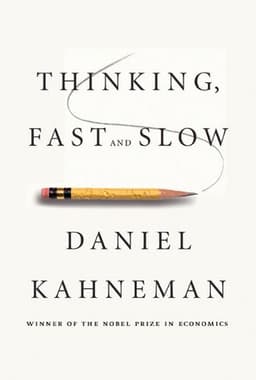
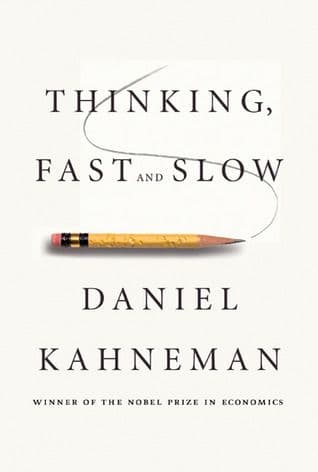
Thinking Fast and Slow Book Summary
Daniel Kahneman
Kahneman explores the two systems that drive the way we think: the intuitive, automatic System 1 and the deliberate, analytical System 2. It explores how these systems shape our judgments, decisions, and biases, revealing the surprising power of intuition and the pitfalls of overconfidence.
Kahneman explores the two systems that drive the way we think: the intuitive, automatic System 1 and the deliberate, analytical System 2. It explores how these systems shape our judgments, decisions, and biases, revealing the surprising power of intuition and the pitfalls of overconfidence.
Psychology
Personal Development
Business
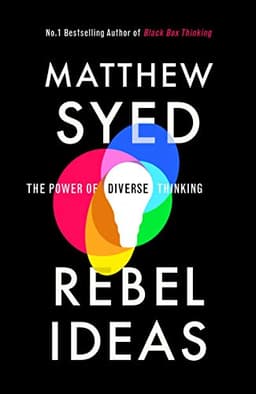
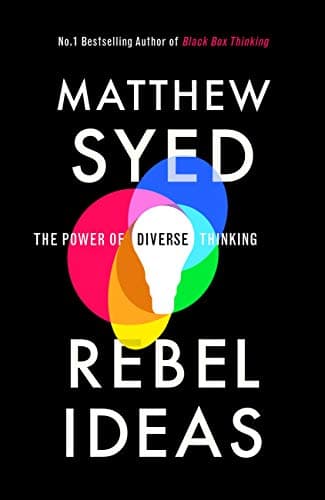
Rebel Ideas Book Summary
Matthew Syed
Matthew Syed reveals the vital ingredient missing from our understanding of success: cognitive diversity. Rebel Ideas shows how bringing together different insights, perspectives and thinking styles turbocharges creativity, problem-solving and decision-making, to improve performance in today's complex world.
Matthew Syed reveals the vital ingredient missing from our understanding of success: cognitive diversity. Rebel Ideas shows how bringing together different insights, perspectives and thinking styles turbocharges creativity, problem-solving and decision-making, to improve performance in today's complex world.
Psychology
Innovation
Business
Leadership

